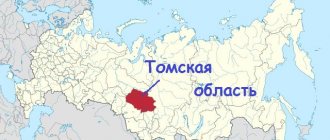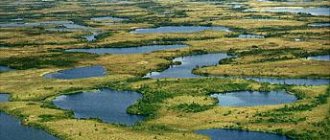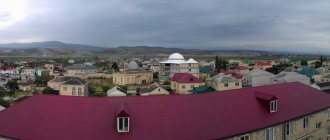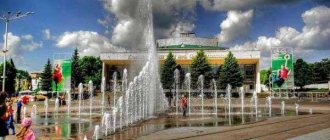What holiday is it today?
December 16, 2021, Thursday
Today are holidays, events: Events that happened on December 16 in the world, in different years Tomorrow: Day of Strategic Missile Forces Day of Employees of the State Courier Service Memorable date in the military history of Russia: Capture of the Ochakov fortress in 1788
Today is the Orthodox holiday of the Prophet Zephaniah. Reverend Savva of Storozhevsky, Zvenigorod. Martyr Angelis... Tomorrow: Great Martyr Barbara and Martyr Juliania of Iliopolis. Venerable John of Damascus...
Today is a national holiday: Day of World Silence and Silence... Tomorrow: Barbarian Day...
Seasons
Seasons, four periods of the year (spring, summer, autumn and winter) characterized by certain average temperatures. The period during which the Sun passes through one of these sectors is called the season. Spring in the Northern Hemisphere and autumn in the Southern Hemisphere begin when the Sun passes through the initial circle of declination and its right ascension is 0° (vernal equinox). Summer in the Northern Hemisphere and winter in the Southern Hemisphere occur when the sun's right ascension is 90° (summer solstice). Autumn in the Northern Hemisphere and spring in the Southern Hemisphere begin when the sun's right ascension is 180° (autumnal equinox). The beginning of winter in the Northern Hemisphere and summer in the Southern Hemisphere is considered to be the winter solstice, when the direct ascension of the Sun is 270°... Next: Seasons. Russian folk calendar. Monthly words...
Government of the Trans-Baikal Territory
The highest official of the region is the Governor, who is elected for a term of 5 years. Only the Legislative Assembly, consisting of 50 deputies, can appoint the head. Elections of members of the representative body also occur every five years. The executive body is the Government of the Trans-Baikal Territory, headed by the governor.
The first Governor of Transbaikalia was elected only on February 5, 2008. He became Ravil Geniatulin. A little later, elections of deputies to the representative body of power took place. Some members of the Legislative Assembly were elected from party lists. Some deputies were able to get into the government through single-mandate constituencies.
The laws of the Trans-Baikal Territory appear thanks to a representative body of power. If the majority of deputies vote for a particular project, it is submitted to the governor for signature. The law comes into force only when it is approved by the highest official in the region.
Folk calendar about every day
Every day one season always replaces another and this determines a person’s way of life. In connection with this, a folk calendar was formed in which there were practically no nameless, unmarked days. Every day was special, had its own purpose. All this was determined by climate conditions and astrological phenomena.
A calendar is a system for counting periods of time. The first calendars arose a long time ago, in ancient times, because there was a need to measure time. The word calendar comes from the Latin words caleo - to proclaim and calendarium - debt book. This is due to the fact that in Ancient Rome the beginning of each month was especially proclaimed, and because it was customary to pay debts on the first day of the month. Different peoples counted time differently. Some calendars are based on the changing phases of the moon - lunar calendars; in others - the change of seasons - sunny; in others, the length of the year was coordinated with the change of seasons, and the counting of months was associated with the phases of the Moon. Such calendars are called lunisolar.
In Rus', the calendar was called a monthly calendar. Every day, the month book covered the entire year of peasant life, “describing” day by day, month after month, where each day had its own holidays or weekdays, customs and superstitions, traditions and rituals, natural signs and phenomena. The cyclical nature of the calendar is reminiscent of human life, where spring is youth, summer is heyday, autumn is the time of harvesting fruits (it’s good if there are some, otherwise you can live your life without collecting fruits), winter is the time of wisdom and peace. This cyclicality and rhythm determined the way of life of the farmer. The folk calendar was an agricultural calendar, which was reflected in the names of the months, folk signs, rituals and customs. Even the determination of the timing and duration of the seasons is associated with real climatic conditions. Hence the discrepancy between the names of the months in different areas... Next: Folk calendar...
Healthcare in the region
Today there are more than 120 medical institutions in Transbaikalia. Patients are assisted by qualified doctors with higher medical education. In this regard, the Transbaikal region can be called quite developed. The capital of the region is famous for its educational institutions that successfully treat cancer.
In rural areas, people are provided with assistance at first aid stations. Here they deliver babies and make appointments for the treatment of simple diseases. In difficult cases, the patient is sent to the regional center or the capital.
Fishing calendar for every day
The fishing calendar should not be taken as an absolutely indisputable truth. Fish biting is greatly influenced by a whole range of natural factors, as well as the influence on the nature of man himself. You must not forget that the fish’s bite depends and is determined not only by the calendar dates and biological cycles of their life, reflected in the calendar, but also, no less, by the state of their habitat; the bite also depends on weather conditions: air and water temperatures, cloudiness, wind direction and strength, etc... Next: Fishing calendar...
Districts of the Trans-Baikal Territory
The Trans-Baikal Territory includes 31 districts. These include 10 cities, 41 urban settlements, as well as 750 rural settlements. This administrative-territorial division explains the main employment of the population. Most residents of Transbaikalia live in villages. Thanks to good black soil and clean air, farmers have a good income.
The largest settlement in the region is Chita. The second place is occupied by the city of Krasnokamensk. About 50 thousand people live here. The population in most cities and towns does not exceed 20 thousand people.
Orthodox calendar about every day
Orthodox calendar: Orthodox, Church and Christian holidays.
The church year is an alternation of weekdays and holidays. On weekdays, a person is called to work “by the sweat of his brow to earn his bread.” Holidays are given in order to feel liberation, to rise above the bustle and routine of the world, to feel involved in the highest of worlds, “where there are no illnesses, sorrows and sighs, but endless life.” Since ancient times, holiday cycles have been associated with the seasons. The pagans associated them with the worship of the forces of nature, the cult of which in the Old Testament was replaced by gratitude to the Creator for the universe. And although the connection between holidays and the seasons has not completely lost its power, since God is present in everything, in the plant and animal world, in human works, it nevertheless faded into the background, giving way to a spiritual foundation built on the Sacred Scriptures. The history of Orthodox holidays dates back to the times of the Old Testament. Each of the Orthodox holidays is dedicated to the remembrance of the most important events in the life of Jesus Christ and the Mother of God, as well as the memory of saints... Next: Orthodox calendar...
Tourism in the Trans-Baikal Territory
The entire region is divided into several tourist areas. The South-West is considered the most popular among visitors. The Sokhondinsky Nature Reserve attracts a lot of attention from tourists. Entire hikes with overnight stays in the open air are organized here. In the summer, tourists travel by kayaking, and in winter - by skiing. The mountainous terrain also attracts many people. But only experienced tourists can afford to climb the hill.
The South-East attracts much less sports tourists. Despite this, there are many natural and cultural attractions here. Just look at the monuments of Buryat national culture - Aginsky datsan, Tsugolsky datsan. In Alkhanay National Park, every tourist can relax his soul and body. There are many monuments here that will tell you about the history and culture of Transbaikalia.
The Transbaikal region is famous for its beautiful architecture. The capital shows the contrast between ancient times and modern times. Next to the ancient buildings there are modern buildings and cottages.
The north of Transbaikalia attracts tourists with its mountainous terrain. Ascents to the highest point of Transbaikalia - Peak Bam - are organized. The ridge is characterized by difficult passes and turbulent rivers. Therefore, it is not recommended to go here on your own.
Russian folk calendar for every day
The word “sign” comes from the word “notice”, i.e. observe. As a result of observing what happens around a person every day, he accumulates life experience. This knowledge was passed down from generation to generation, carefully preserved and people trusted it as a sacred book. Many signs have come to us from the depths of centuries without losing their knowledge. Each of us is free to choose: to dismiss all this as an absurd superstition or to take a closer look at the signs and take the centuries-old experience of generations more seriously. Most of us, when taking exams, ask them to scold them, boasting about some kind of good fortune or luck, spit so as not to jinx them or knock on wood, take a detour if a black cat crossed the road, are afraid of the number 13 and much more. And who among us does not have lucky things, numbers? Who has never resorted to the help of fate at least once in their life, who has not believed in secrets? It’s as if everything connected with signs is hidden somewhere deep in our subconscious. Often we remember them mechanically, unconsciously, or just as a joke. But, undoubtedly, the signs contain a lot of accurate knowledge and practical wisdom of our ancestors. They cover all the characteristic, often difficult to perceive, natural phenomena. Signs have preserved a lot of what was in old folk holidays and customs; they help predict the weather, grow crops... Next: Folk signs...
Transbaikalia
Cities of Trans-Baikal Territory
Transbaikalia is a region whose history is closely connected with the history of Russia. Its settlement began by pioneers in the 17th century. It was they who founded the first Russian settlements on the territory of Transbaikalia.
Chita
The capital of the Trans-Baikal Territory, the year of its foundation is considered to be 1653. History names the Cossack Peter Beketov as the founder of the city. Chita is located at the foot of the hills, on the banks of the Chita River. Initially, the settlement was called Chitinskaya Sloboda. In 1699, a fort was built here, and until 1821 the village bore the name of the Chita fort. In 1827, exiled Decembrists appeared, and later their families. Since 1851, Chita became the center of the Transbaikal region and the seat of command of the Transbaikal Cossack army. In 1897, the Trans-Siberian Railway was laid through the city, and since 1900, after the opening of railway traffic, Chita has become a major transport hub, which contributes to the formation and growth of the city as an industrial center.
Today's Chita is a modern Russian city with a population of more than 335,000 people. The main areas of industry are energy and mechanical engineering. In recent years, the city has been actively built. The Cathedral, the largest Orthodox church in Siberia and the Far East, was built. Chita is not only the administrative, but also the cultural center of Transbaikalia. There are 8 museums, several theaters, a network of libraries, the Trans-Baikal Regional Philharmonic, Palaces and Houses of Culture.
Nerchinsk
The city was founded, like Chita, in 1653 by the Cossacks of P. Beketov. Located on the banks of the Nercha River, it was called the Nerchinsky fort. In 1654 it was plundered and burned by Gantimur. Restored in 1657 by governor A. Pashkov. Place of conclusion of the Treaty of Nerchinsk with China (1689). In these places, from 1664 to 1673, near Nerchinsk, the easternmost monastery in Russia and the first in the Transbaikal region operated the Assumption Monastery. Since the 18th century, Nerchinsk has been a place of hard labor and exile for political prisoners. During the Civil War, Nerchinsk was captured by Japanese invaders. Now the population of Nerchinsk is about 15,000 people. The attractions of Nerchinsk include the Butin Palace, which is the hallmark of the city. The whole complex, occupying an area of at least a quarter, was built in the 19th century by gold miner, merchant, philanthropist M.D. Butin. There is also a local history museum in Nerchinsk.
Sretensk
Sretensky fort was founded in 1689; now it is a city with a population of about 6,500 people.
Balei
The settlement was founded at the beginning of the 18th century; in the 19th century, the first placer gold was found here, after which gold mining became the main activity. In 1929, a deposit of ore gold was discovered, and gold mining reached an industrial level. In 1938, the village of Novotroitskoye was renamed the city of Baley. In 1947, another gold deposit was discovered near Baley. Now the city's population is about 12,000 people. The city has a difficult environmental situation and economic problems.
Shilka
The foundation of the settlement dates back to 1765. The name comes from the Shilka River, on which the settlement was founded by the Cossacks. In 1951, Shilka received city status. Now there are about 13,000 inhabitants.
Petrovsk-Zabaikalsky
The settlement of Petrovsky Zavod was created in 1789 by Catherine II after the founding of the Petrovsky ironworks and iron foundry in 1788. Iron ore was mined in the surrounding area. The Decembrists served hard labor at the Petrovsky Factory. Their families lived here. In 1936, the settlement received the name Petrovsk-Zabaikalsky. After the Civil War, the plant was reconstructed and in 1937 received the name State Petrovsky Iron Smelting, Foundry and Mechanical Plant. During the Great Patriotic War, the plant operated at full capacity, and there was also an evacuation hospital in the city. Today the city is home to about 17,000 people. Industry is represented mainly by food and forestry enterprises. The city's attractions include the house of the Decembrist I. I. Gorbachevsky, where a branch of the Decembrist Museum now operates. The historical cemetery where the Decembrists and members of their families are buried has been preserved.
Borzya
The settlement was founded in the 18th century, next to salt lakes (in Buryat “boorzha”). From 1756, industrial salt mining took place on the lakes for almost 200 years. The village received a new impetus for development after the construction of the Trans-Siberian Railway. The village of Borzya was granted city status in 1950. Now the city's population is about 29,000 people. The main focus of the industry is coal mining. Memorable places include the mass grave of 44 soldiers of the Great Patriotic War who died in hospitals in the period 1941-1945. A natural attraction is the Borzinskoe salt lake, located 24 km from the city.
Khilok
The village was founded in 1895 as a railway station. In 1929 it became a workers' settlement and has been a city since 1951. Today it has about 11,000 inhabitants. Sights include ancient human sites discovered in the Khiloksky region, and Mount Ambon, sacred to the Buryats.
Mogocha
The village was founded as a station on the Amur Railway in 1910. The name comes from the Mogochi River. The region has rich resources: gold, molybdenum, uranium, tungsten, iron, nickel, rare earth metals, coal, mineral water sources. In addition, Mogocha is a large railway station. In 1950, Mogocha received city status. Mogocha and its almost 14,000 residents greet today with optimism and hope for the future. After the stagnation of the 90s of the last century, population growth gradually begins and industry revives. Today its main directions are gold mining, timber, and processing. These places are very beautiful; Chekhov and Garin-Mikhailovsky dedicated their lines to them. The Amur River originates here. There are beautiful views that are not found anywhere else.
Krasnokamensk
Krasnokamensk is the second city in Transbaikalia in terms of population after Chita. About 54,000 people live here. It emerged from a geological village in 1968 after geologists discovered a uranium deposit. It got its name from the color of one of the nearby rocks at sunset. Today, the main enterprise of the city is the Priargunsky Industrial Mining and Chemical Association. In addition to uranium mining, coal mining is carried out. On the territory of the Krasnokamensky district there are more than 20 objects classified as monuments of historical and cultural heritage. These include rock paintings discovered in several places, a fairly well-preserved ancient settlement in a cave, and the “wall of Genghis Khan.” The city of Krasnokamensk itself, which grew among the steppes in a very short time, is considered a model of rationality and improvement.
Holiday calendar, dates and events of the year
All state and professional holidays in Russia, including significant World and International holidays, and other equally interesting holidays and events about every day.
The holiday has always kept pace with the history of mankind. Social time can be divided into three types: everyday life (weekdays), weekends and holidays. Everyday life is a series of practices repeated day after day and every day (work). Weekends are regular breaks from the rush of everyday life. It is believed that on weekends a person should restore his strength after working days. Day off, non-working day. A holiday is a day of celebration established in honor or in memory of someone or something. A day or series of days celebrated by the church in memory of a religious event or saint... Next: Calendar...
Sports objects
The city is not a good place for improving health, but there are a dozen significant sports facilities here. Among them:
- Lokomotiv Stadium with a capacity of 12,500 people.
- Yunost Stadium with a capacity of 4,500 people.
- Palace of Sports.
- Equestrian Center.
- Ski complexes “Vysokogorye” and “Svetlaya Mountain”.
- Two swimming pools.
- An ice training complex that can accommodate 600 people.
- Ice Palace (for 600 people).
- Other stadiums.
Prayer book, Orthodox prayers for every day
Prayer is the most powerful means for healing all illnesses - both physical and mental. Prayers can be laudatory or grateful, petitionary and repentant. If we have offended God, sinned, we must ask Him for forgiveness, that is, repent. Such prayers are called repentant prayers. If everything is fine with us, if we and our loved ones are healthy and prosperous, if we have a place to live, something to wear, something to eat, we must glorify and thank God for this. Such prayers are called praise or thanksgiving. If some misfortune, illness, trouble or need happens, you need to ask God for help. Such prayers are called petitionary... Next: Orthodox prayers...
Transport Chita
The transport system is more focused on transit federal transportation than on intracity transportation. Three federal highways pass through the city: Chita-Zabaikalsk (A350), Chita-Khabarovsk (P297 Amur highway) and Irkutsk-Ulan-Ude-Chita (P258 Baikal highway).
Rail transport is represented by the Trans-Siberian Railway, on which Chita is an important center. There is a dispatch center in the city to control transportation on a 3,400 km stretch. There are a large number of railway stations.
Air transport is represented by Kadala Airport with international status.
Buses, trolleybuses and minibuses operate within the city area. There is also a railway for children.
Zodiac, astrological, eastern calendar. Zodiac signs
In ancient times, to establish the calendar, priests used knowledge of the positions of all the planets. Before the reform of Peter 1, the New Year was celebrated on the Day of the Autumn Equinox. On this day, according to ancient legend, the most peaceful treaty was concluded between the Great Race (ancient Slavs) and the Great Dragon (ancient Chinese) and it was approximately 7518 years ago... For the ancient Slavs, the calendar month corresponded to the lunar cycle from new moon to new moon, taking into account such Thus, the relationship of the entire annual cycle with astronomical and natural phenomena. There was no coherent calendar system. The main natural phenomena are still considered to this day to be the days of the solar equinox and solstice - the Slavic holidays Maslenitsa, Kupala, Ovsen and Kolyada. But during the time of Peter 1, all ancient Slavic calendars were abolished and a new Western European calendar from the Nativity of Christ (Julian calendar) was introduced, while the beginning of the calendar was moved to January 1. The Julian calendar (old style) did not take leap days into account and accumulated one extra day every 128 years. After the October Revolution in 1918, the Gregorian calendar (new style) was introduced in Russia, according to which an amendment of 13 days was introduced. The calendar of the ancient Slavs was based on two planets: the Sun and the Moon. And now they don’t use anything at all. The calendar has become static. There is no such thing as the calendar, it turns out, resting on some planet. Nobody even knows about it. There are just some standard numbers, there are months and holidays. The calendar is based on the Sun and Moon. Why is this so? Because these two luminaries influence the Earth. The Earth revolves around the Sun, and the Moon revolves around the Earth. And these two luminaries create the atmosphere on the planet. From here the calendar is built... Next: Astrological calendar...
Attractions
Natural complexes are extremely popular in the region. Every year many tourists come to the Sokhondninsky and Daursky nature reserves. There are such attractions as the Charsky Sands tract, Lamsky town, and the Polosatik rock.
Buddhist centers are of great interest to tourists. Their age exceeds 200 years. It is here that the most ancient architectural monuments of the Buryat people have been preserved. It will be interesting for tourists to look at the building of the Tsokchen-dugan cathedral temple, as well as numerous incense burners. Tourists have vivid impressions after attending a service in the temple.
Dream books online, interpretation of dreams
A dream book is nothing more than an interpreter of dreams and dreams, a translator of dreams. Since ancient times, people have been using dream books; dreams have always been given great importance, and people have often noticed the prophetic properties of some dreams. The dream book can become your faithful assistant every day and throughout your life, thanks to the dream interpreter you can always make the right decisions, the dream book will help you resist temptations in time, and will warn you against wrong steps and frivolous actions. Further…









